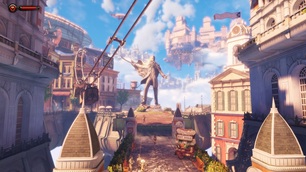 The possibilities are infinite. Booker Dewitt is given instructions to find Elizabeth, a young woman, and take her to New York. Along the way he will use a few awesome powers and learn things about his past that he never could have imagined.
1. Gameplay
I love the Bioshock series. Having listened to both The Fountainhead and Atlas Shrugged (the latter of which was a 99 hour long audiobook), I have a soft spot for anything that even considers her political viewpoints and puts them in the context of a story. The original Bioshock was extremely well written and was an interesting take on what could happen if science, freed from the constraints of morality and social pressure, was unleashed on a population. Bioshock Infinite goes in a different direction. Instead of focusing on scientific pursuits, it tends to focus more on religion and culture from the 19th century. It has a pretty deep story that gives a dark view of how a capitalist theocracy could be used to make lives miserable for all but a small portion of a city’s population. As long as the player can understand the material and overcome any political inclinations and see this game as simply an interactive work of literature, he will definitely enjoy this game. I seriously loved Infinite’s story up until the last 10 minutes, then everything fell apart. I’ve talked with a number of people who have finished the game and they give mixed opinions. Some love the complex ending and the way everything came together in a twist that no one saw coming. But others (myself included) felt that the twist was a serious disappointment that created more questions than it answered. But the gameplay more than made up for it. Gunplay had a better weapon variety and felt much smoother and more responsive than either of the previous Bioshock games. This may not make sense to people who don’t play dozens of first person shooters per year, but to the hardcore gamers this is extremely important. The responsiveness of controls, even if there is half a second of lag, can be the difference between virtual life and death. Bioshock Infinite is all about combat, so the fact that the combat plays itself out so well is a significant asset. Aside from the very end of the story, the only other negative thing that I thought while playing is that the game lacked any real variety. It’s almost 100% combat. The previous Bioshock games had a hacking minigame that, while extremely repetitive, gave a welcome calm with excellent rewards to the otherwise combat-heavy gameplay. Bioshock Infinite didn’t have anything like this. It would have been nice to have the occasional puzzle to encourage some non-combat problem solving. Either way, this game was amazing and should be extremely high on every gamer’s list of things to play.
This game took me a little over 11 hours to beat. This is decently long for a modern first person shooter, but I really expected more. There’s no multiplayer and no “NewGame+”, which is a real shame. I didn’t have nearly enough money to buy all of the powers or weapon upgrades, so it seems like a NewGame+ option would have been perfect to add replayability to the game. Unfortunately, once the end is revealed I didn’t feel much need to go back and replay the game. There were collectibles that I missed, but I took my time going through the first time. It would be interesting to try out the different powers, but a lot of them unlock pretty late in the game. This gives me very little opportunity to try and master those powers without a NewGame+ option.
For the most part there was very little about this game that I would consider frustrating. It was annoying that money tended to be in short supply, but there were very few battles that couldn’t be figured out with the correct application of firepower and salts. That being said, some of the people I talked to did run into some problems with the skylines. There were some bugs that will eventually be patched, but the biggest problem they had was that the attachment indicators were sometimes off while in combat. When the player is getting hit, it’s difficult to be 100% accurate with the skylines. The player could think that he is jumping toward the skyline, but the game is simply having him jump up and down. There were some specific scenarios where I saw an indication for my ability to attach to a skyline even if certain objects in the environment prevented me from doing so. 2. Parental Notices
The violence level in Bioshock Infinite goes through significant spikes and dips. Most of the violence will be fairly mild all things considered. The player will be able to use a decent variety of firearms to attack enemies. These weapons will become the main method of violence, since ammunition is abundant. Hits will result in some blood but usually this is lost in the distance that the player must keep from almost every enemy. Headshots will result in a slightly greater amount of blood, especially when the player uses a sniper rifle. An audio cue (usually of violins playing a sharp note) will serve to highlight when the player gets a headshot. Headshots with high-powered weapons, like sniper rifles, can blow the enemy's head clean off. I tended to be fairly accurate with my shots, so this occurred somewhat regularly. Most of the powers are deceptively mild. The player can use powers like “Murder of Crows” to attack enemies, but there isn’t much that would make them more violent than even the firearms. One of the powers involves throwing a flame grenade at enemies. This can light enemies on fire. These enemies will react to the flames until it either goes out or they die. If they die, their bodies will disintegrate into ash. Melee attacks are uncommon after the first few chapters of the game. Normal melee hits will cause the enemy to react, but the blood is usually lost as the player flails about to try and hit the enemy a second time (since it takes a few melee hits before even the weakest enemy dies). However, the player can execute damaged enemies. The least violent execution involves the player twisting the enemy’s head to break its neck. The violence level goes up from there. Most executions will involve a significant amount of blood. The most violent execution, which is just as common as the other types, involves the player decapitating the enemy completely. This will result in a shower of blood that will splatter on the screen. There are some more specific events where violence increases dramatically. The very first instance of violence that the player will see is one example of this. Police will come and try to arrest the player for being the “false prophet”. The player avoids the spinning hook blade of one officer, grabs the other’s face, and drives it into the blade. That results in a horrific blend of blood and grinding noises. A little bit later, the player will watch as the “Murder of Crows” is used on an unfortunate, nameless individual. The man is torn to shreds by the birds in a particularly bloody, violent display. However, the actual power doesn’t do nearly this level of violence. The idea of scalping also came into play a few times. While the player can never scalp anyone and never sees the process, he can find the scalps of six of Comstock's more notorious guards and henchmen. Most of the violence in the game is fairly predictable. However, it does definitely spike at times. The cutscenes above will be seen by all players. The player can avoid all of the melee executions, but this is seriously unlikely. As I mentioned, it is probable that players will use the executions early on, but avoid melee attacks entirely once they gain access to firearms and decent vigors.
Two of the vigor bottles are designed to look like semi-nude women. This is pretty easy to notice when the player drinks the vigors for the first time, but is much more difficult to find afterward.
Substances are fairly common throughout the game. Most of them are fairly benign. The player will pick up health packs in order to heal, but these healing items only come in the form of food or medicine bags. “Salts” are a bit more obvious. The player needs to consume salts in order to be able to use his “vigors” (aka powers). Salts usually come in the form of bright, blue bottles. However, there are a few vending machines that automatically dispense salts. The vigors themselves also come in intricately designed bottles. The player drinks these and automatically gains the power. If the player dies, Elizabeth will automatically revive him. In the brief flashes that he can see of her trying to wake him up, she injects him with some sort of green fluid. It is never clear exactly what that fluid is. While food will be the most common thing that the player will consume, he will also have access to alcohol and tobacco. The player can smoke cigarettes for increased salts but decreased health, but there isn’t an actual animation for the smoking. It’s simply consumed just like every other food item. Alcohol is different though. The player can consume bottles of alcohol found around the game. Doing this will get the player drunk. Drunkenness consists of a fuzzy screen, but the player is still able to function in combat.
Gambling is not a factor in this game. 3. Other Factors
There are no modding tools available for this game.
Religion is a pretty prominent element, especially early on in this game. While no specific religion is mentioned, Comstock and his people are clearly devoted to a Christian-like religion. It more closely reflects Mormonism than other forms of Christianity (i.e. Protestantism, Catholicism, etc.), but the vague references and allusions could easily apply to any of the Christian denominations. The beginning sections of Colombia will prominently feature art and architecture modeled after Christian churches. There are numerous references to Biblical places and stories. Comstock is also commonly referred to as “Our Prophet” by Colombia and its people. Usually this is perpetuated by the government propaganda, but it’s extremely common to see images referring to Comstock in this way. The player will also have to be “baptized” early in the game in order to progress into the city. It’s clearly made out to be a religious ceremony. Baptism comes back up very late in the game and is key to the ending. But sometimes the religious elements of this game throw in curveballs. For example, the Founding Fathers of the United States are frequently depicted as saint-like. The reasoning behind this was not explained in much detail. Other displays depict Elizabeth, Comstock’s daughter, as a sort of miracle child. One image makes Comstock, his wife, and Elizabeth in something that looks straight out of a Christmas nativity scene.
Anti-law is going to be a serious factor in this game. The player will be openly fighting against the police force of Colombia. The first enemies that the player will kill are all police officers. The game doesn’t give the player a choice in this. The police officers come and threaten him with violent force for being the “False Shepard” (which evidently he actually is), so he kills them to protect himself. And then he continues killing them so that he can get to Elizabeth and take her away from Colombia. And then he keeps killing them to the end of the game. There is a resistance force known as the Vox Populi that actively fights against Comstock and his lackeys. This force consists of some fairly violent revolutionaries who are willing to kill children just to get rid of Comstock. In very rare circumstances, the player is given the opportunity to steal items. This will lead to the police noticing and attacking him immediately. However, there doesn’t seem to be any other real consequence to theft.
There are no multiplayer game modes for this game.
Extreme sports isn’t usually an issue. The player can run, jump, and (with the help of a vigor) charge at enemies. For the most part, though, he’ll keep his feet firmly planted on the ground. Except when he’s using skylines and freight hooks. Very early in the game the player will get a sort of hook blade. This blade is magnetized and can be used to latch onto freight hooks and skylines. These are all at least a dozen feet off the ground, but the player can easily jump to and from them with no damage. Skylines are particularly interesting. They are normally used for moving cargo throughout the city, but the player can attach to them and slide along them for quick and easy maneuvering across large areas. Movement can get fairly fast-paced at times but no matter what the player will always hang on and can even shoot enemies while sliding along the skyline.
Magic is a serious factor in this game. The player will get access to eight different powers that can cause different effects. The player will throw fire bombs, trip enemies with waves of water, and send murderous crows to peck at enemies. The amount of time that the player will spend using magical powers will vary. This game is made up almost entirely of combat, so there will be plenty of opportunities. I tended to save my “salts” so that I could possess the vending machines and get free money. When I talked to other gamers, they said the same thing that I did. They stuck with one or two powers repeatedly and hardly touched the others. But no matter what the player ends up doing, magic will be a constant element in the combat. In the story, there were a few more specific elements that definitely involved magic. The main female character, Elizabeth, has magical powers to manipulate space and time. She can open “tears” to other dimensions. On a basic level, this lets her call in objects for the player to use while in combat. On a more complex level, she can actually teleport the player into other dimensions. This leads to a pretty complex story with a very complicated ending. The main antagonist, Comstock, uses similar magic to resurrect his wife as a ghost. She then proceeds to attack the player.
Racism Sometimes games include race issues as a way to communicate a political message. In Grand Theft Auto: San Andreas, race was a prominent element, but it was mostly in conjunction with wealth and social status and how those affect law enforcement and gang life. Bioshock Infinite goes way beyond this. Racism in Infinite isn’t just about showing historical perspective or communicating some sort of overall social message. It’s included to make you hate the people of Colombia. Towards the very beginning of the game, the player wins a contest and gets the honor of throwing the first baseball at a young interracial couple. He can choose to either throw the ball at them or throw the ball at the announcer. The cops prevent him from throwing the ball no matter what he chooses to do, but this was a pretty insane moment that put a huge dark patch on the otherwise spotless city of Colombia. In multiple early chapters the player will see elements of black servitude and slavery. There is one house where the player will find blacks who are being hidden and cared for until they can eventually attempt to escape Colombia. In a boardwalk section the player will see a number of black servants serving drinks or cleaning floors. The racism doesn’t just extend to blacks either. The Irish are also included. The men are accused of being lazy drunkards and the women are labeled as “brood mothers”. There is even one section where anti-Semitic slurs can be seen. Suicide
The player can possess enemy machines and people. If the player possesses a human enemy, that enemy will fight for the player. If the possessed enemy does not die, the enemy will kill himself once the possession wears off.
0 Comments
Leave a Reply. |
Like what we do? Want to see more? Donate to the site using the button below!
Not sure what a term means? Read the definitions!
Not sure what a review section is about? Find out more information!
|


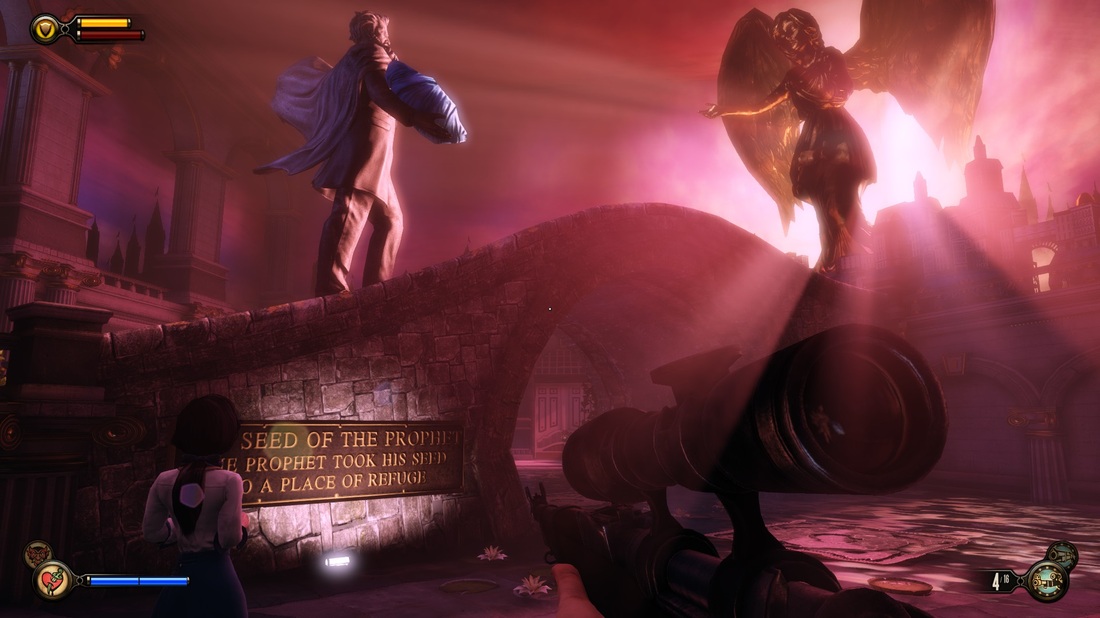

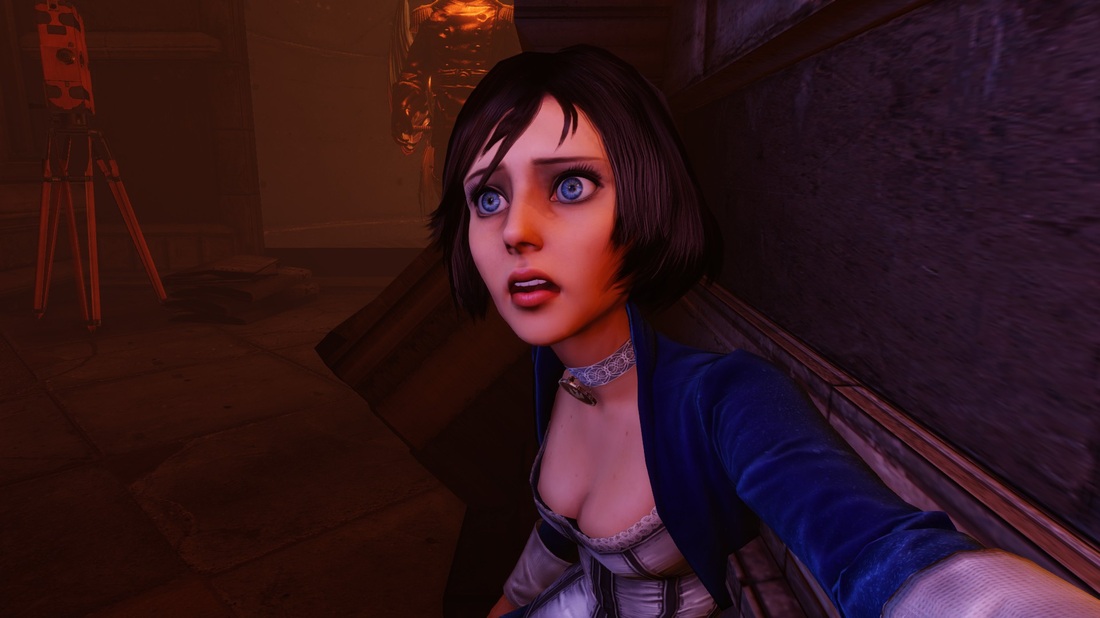

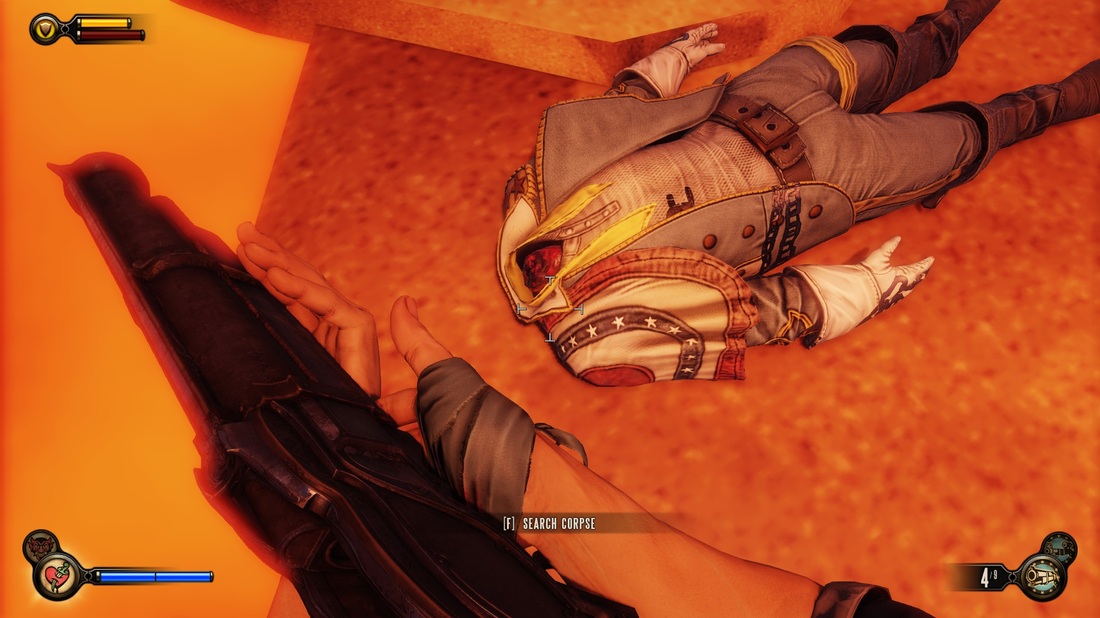






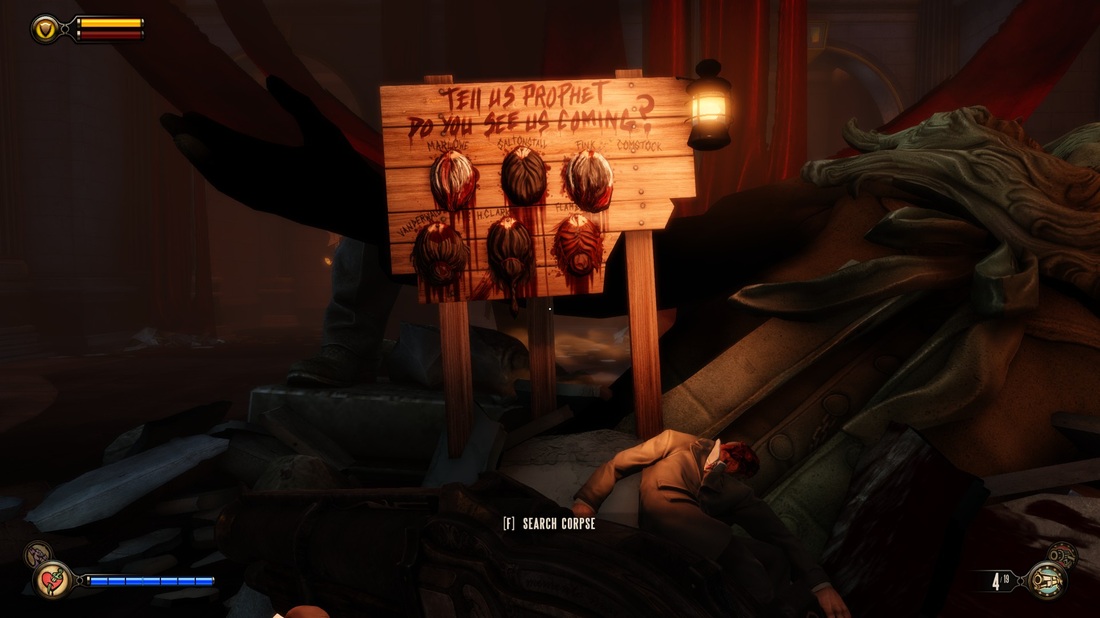
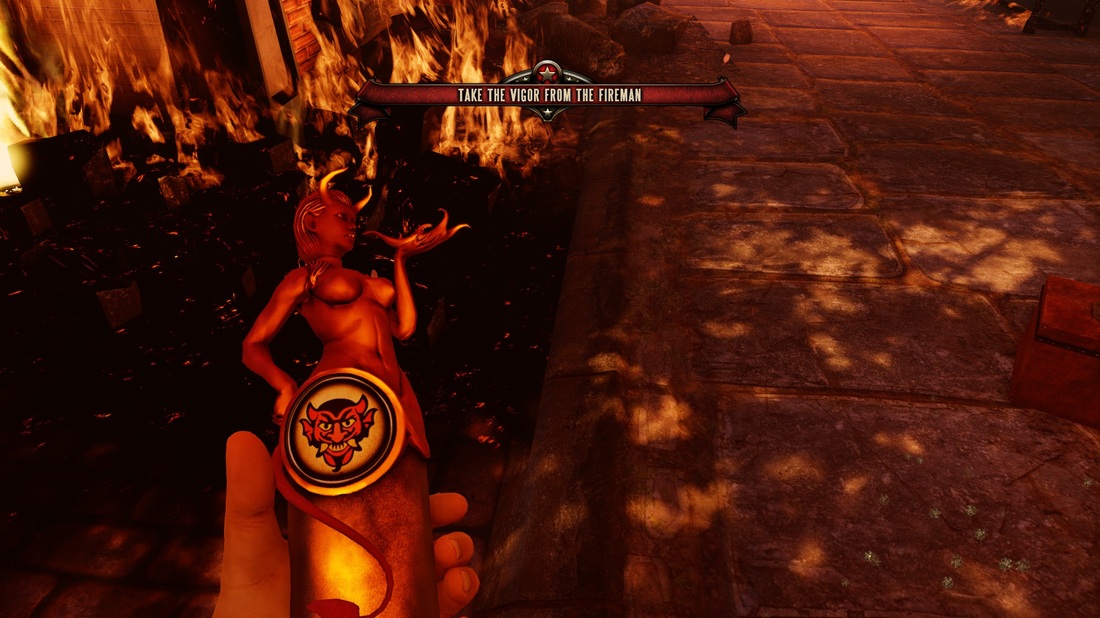
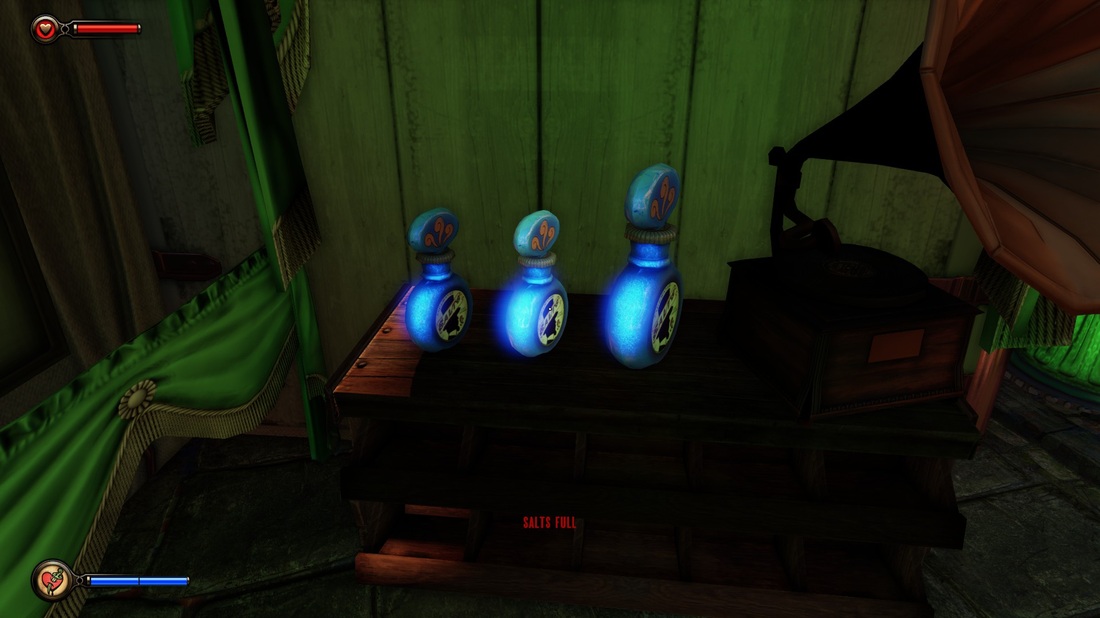

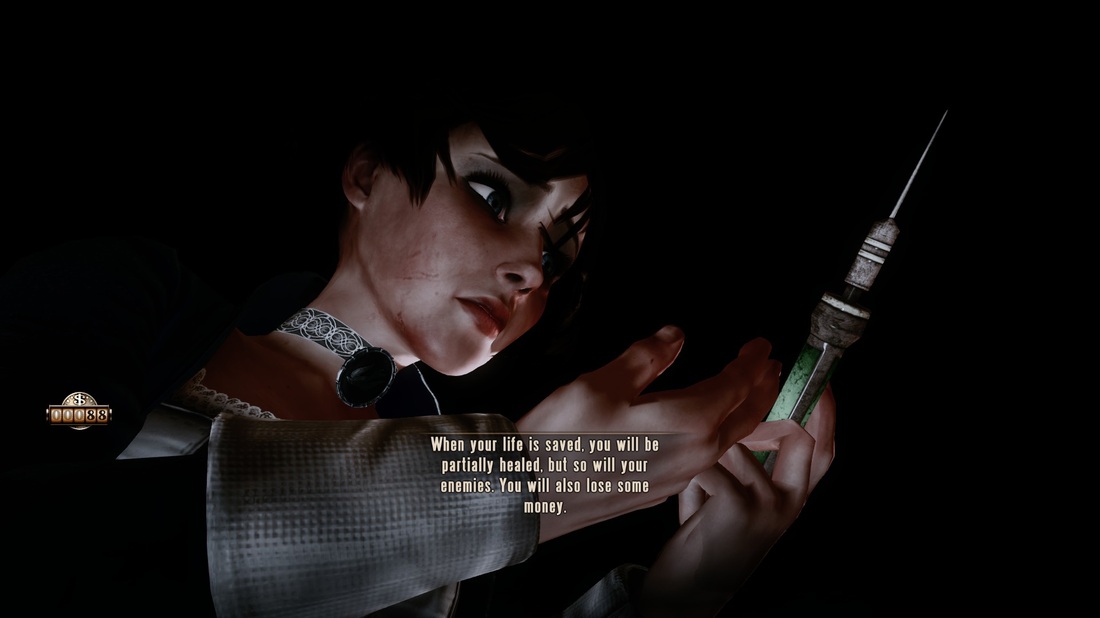
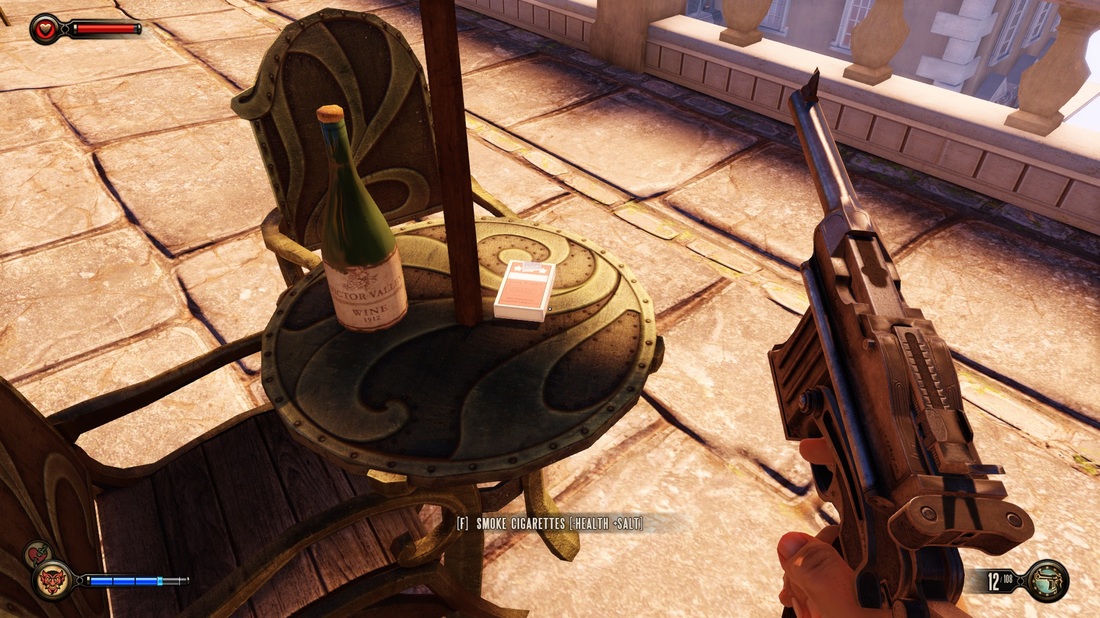


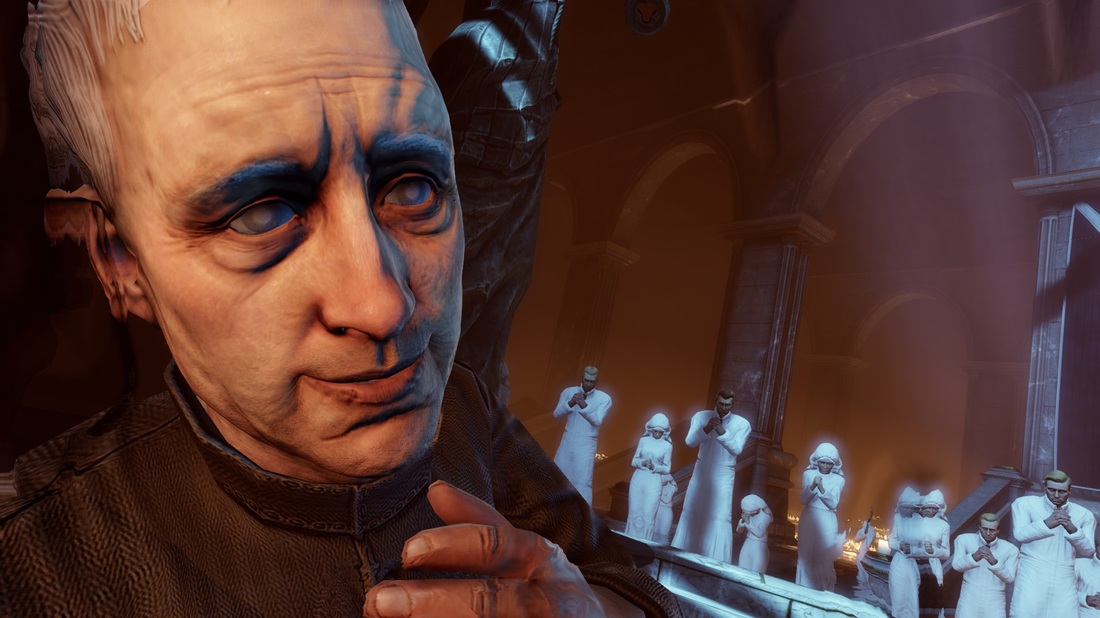






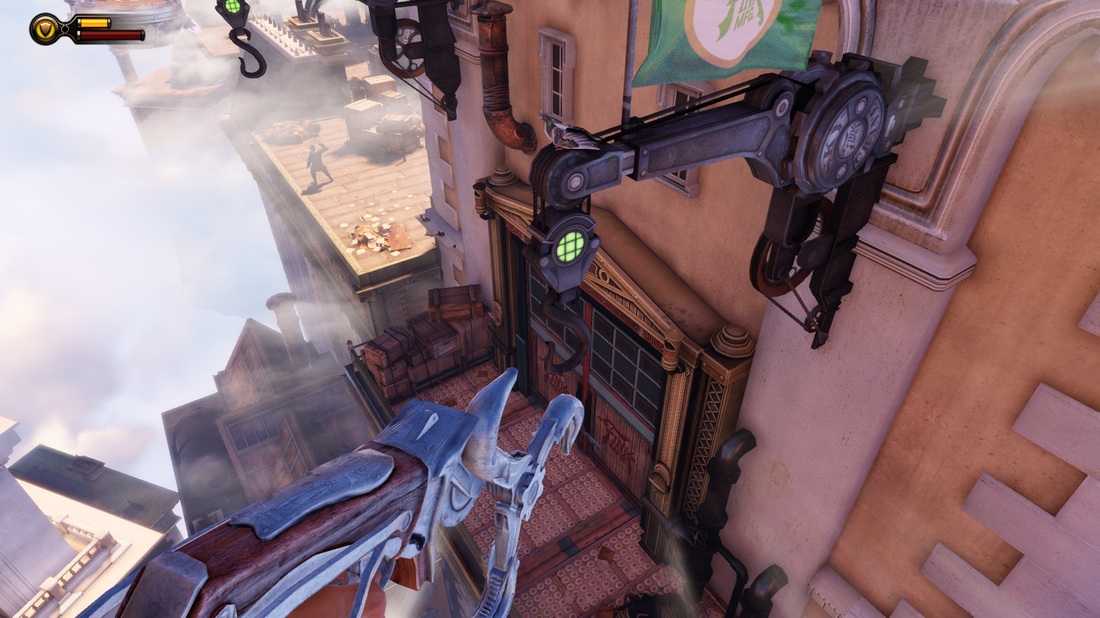

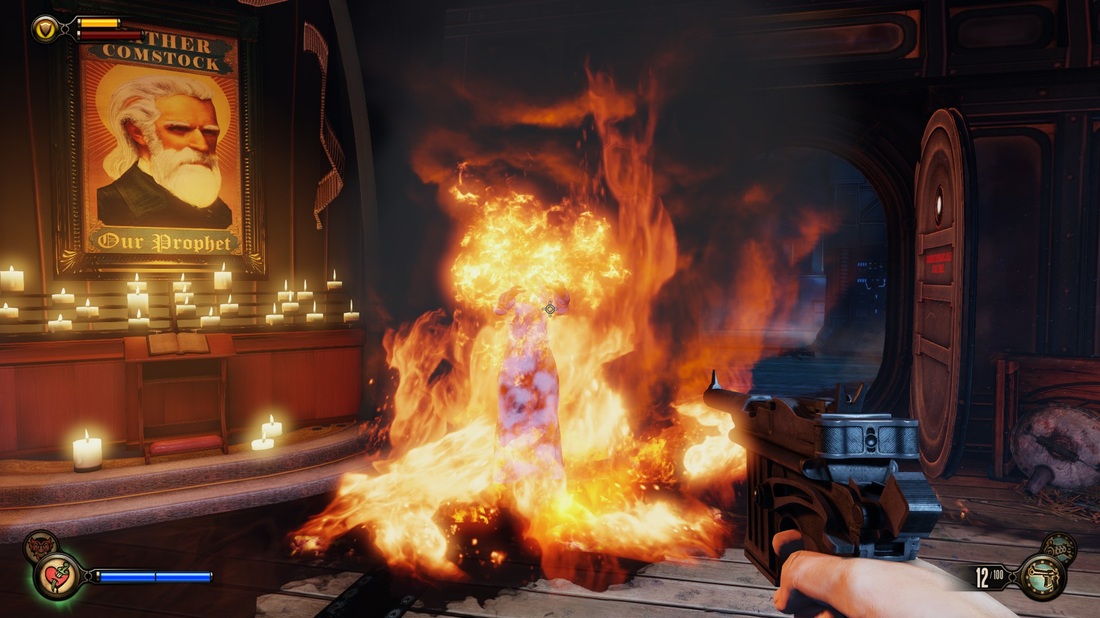



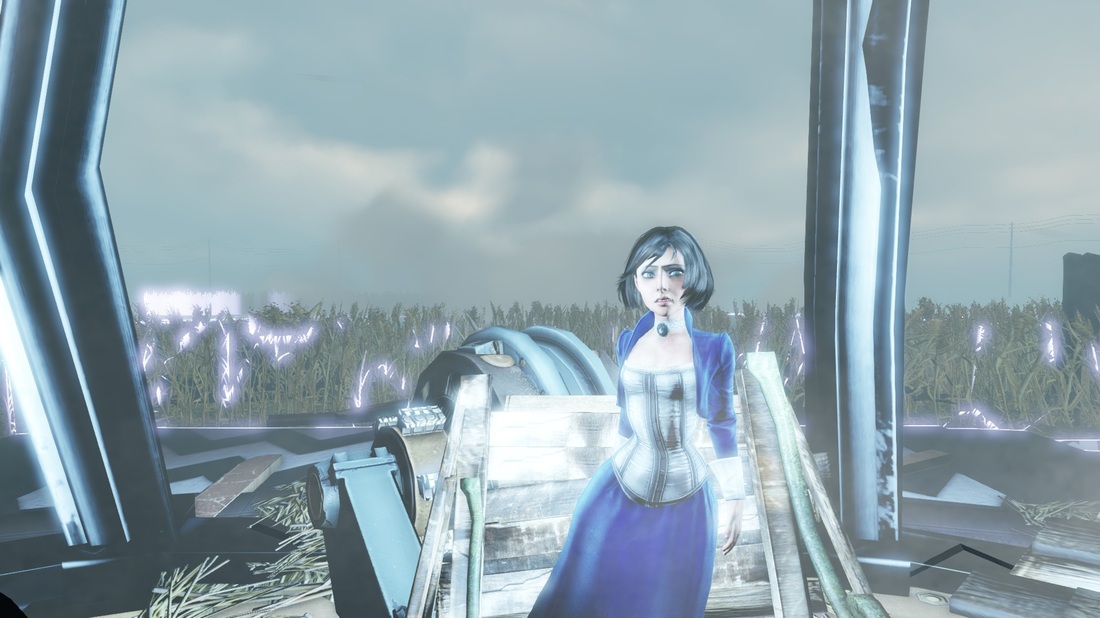
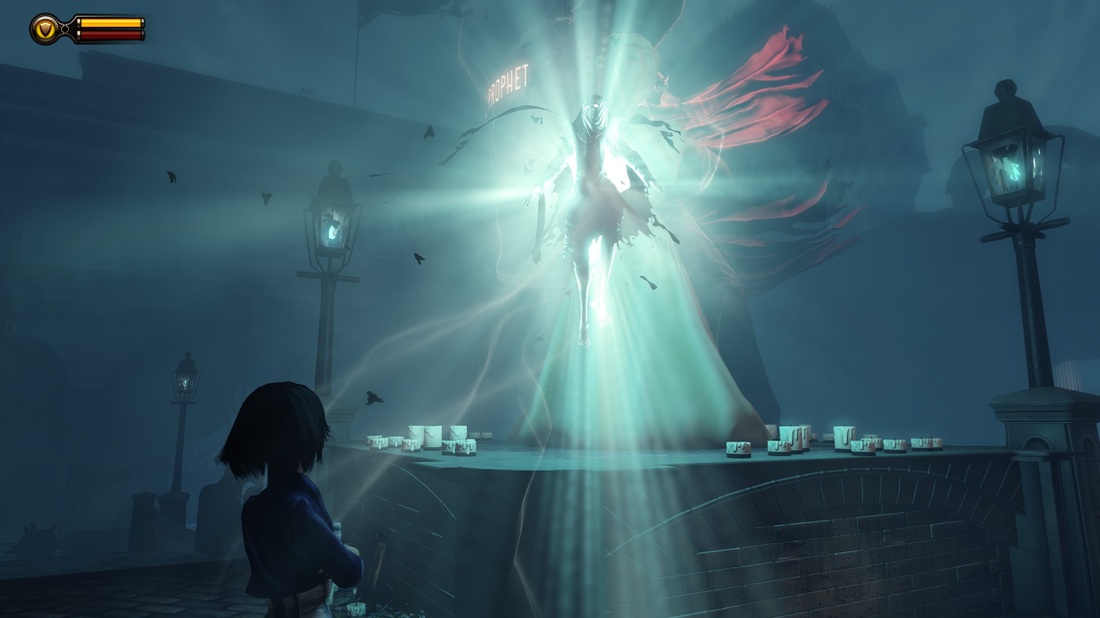



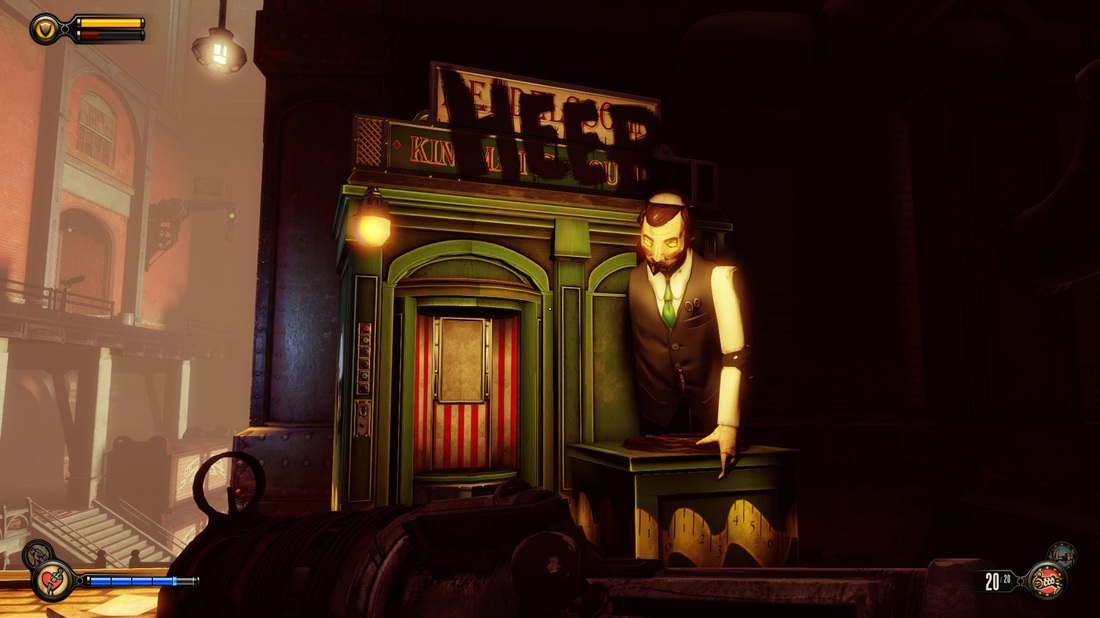
 RSS Feed
RSS Feed